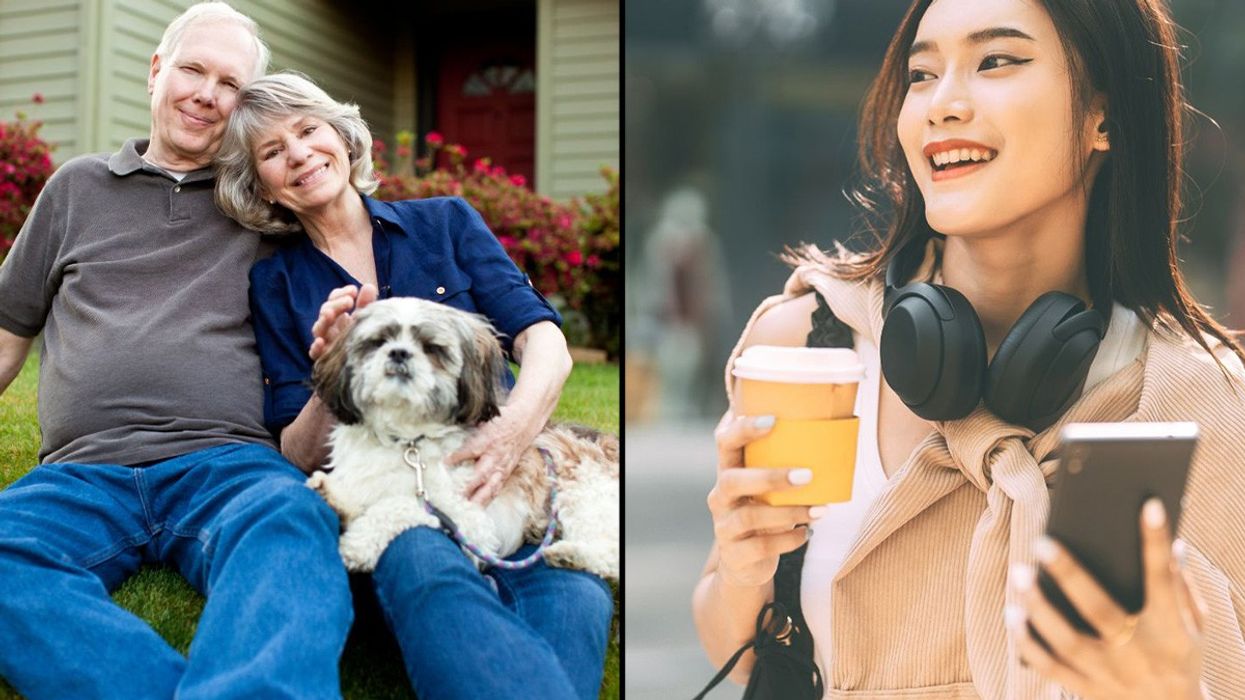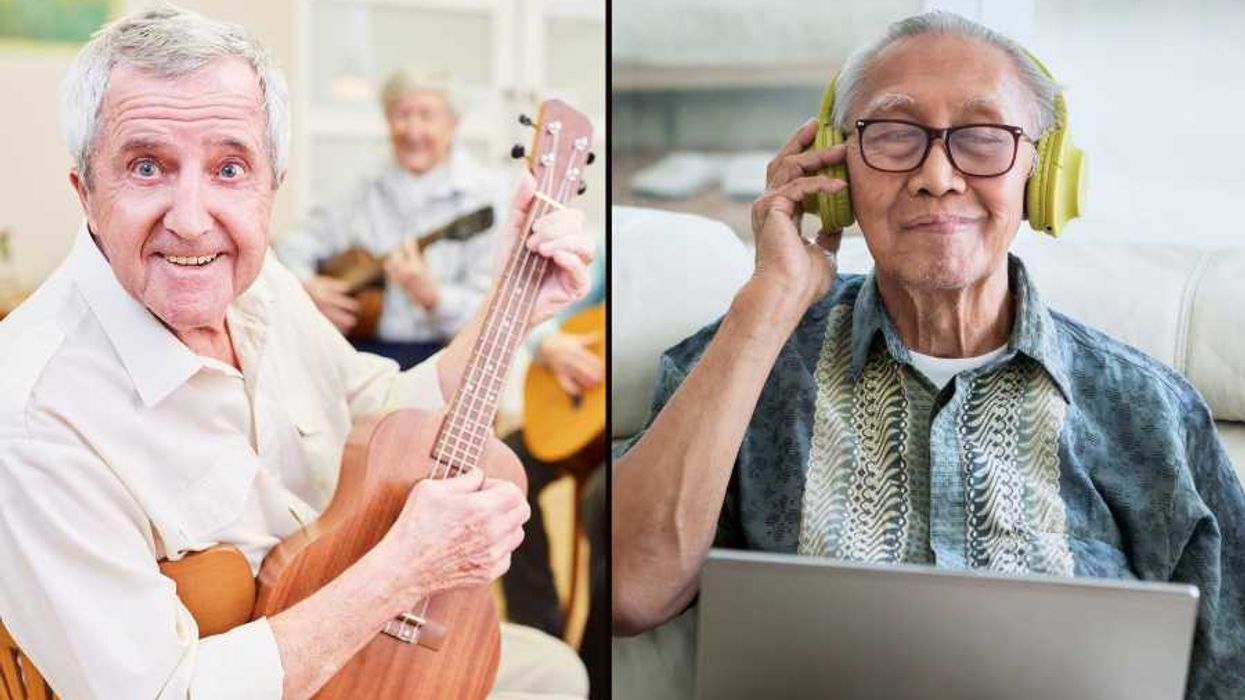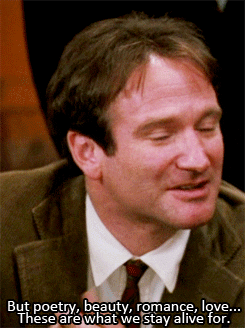This article was produced in partnership with the United Nations to launch the biggest-ever global conversation on the role of cooperation in building the future we want.
Water is life. It grows the plants we eat, it keeps animals alive, and it hydrates us. If we go three days without it, we die. And yet, all around the world, people still lack access to safe drinking water, adequate sanitation, or basic hand-washing facilities in their homes.
Without access to these things, families can become locked in poverty. Hunger and malnutrition are made worse without clean water, and girls are kept out of school as they collect drinking water miles from home, which worsens gender equality. Inadequate sanitation contaminates water supplies, leading to pollution, damaged ecosystems, and disease. Millions of people die every year from preventable diseases because of unclean water; around 297,000 of those deaths are children under five. Worse, climate change is bringing more frequent droughts and floods — threatening to further compound water security threats.
That's why the United Nations has made one of its Sustainable Development Goals to ensure the availability and sustainable management of water and sanitation by 2030. So far, there is good news: the proportion of people using safely managed drinking water increased from 61% in 2000 to 71% by 2017. In that same time period, the percentage of people with access to safely managed sanitation increased from 28% to 45%.
Of course, there is still a lot of work to be done and the road ahead won't be easy. But if history teaches us anything, it shows us that we are capable of making some pretty big leaps forward when we seek to improve people's lives. Over the past two centuries, we've come a long way in our understanding of disease, sanitation, and hygiene; and have taken pretty big steps to help improve access to clean drinking water and sanitation.
Here are just a few of those big leaps:
1854 - During the Crimean war, Florence Nightingale, an English nurse, implemented a number of practices to improve hygiene, such as hand washing, when she realized more soldiers were dying from typhoid, typhus, dysentery, and cholera than battle wounds.
1902 - Belgium became the first country to implement continuous chlorination at Middelkerke to help kill bacteria in drinking water.
1914 - Federal regulation of drinking water began in the United States with the U.S. Public Health Service.
1974 - The Safe Drinking Water Act was enacted to ensure the quality of drinking water across the United States by authorizing the EPA to set national standards to protect against the health effects of contaminants.
1989 - In November, the Convention on the Rights of the Child explicitly mentioned water, environmental sanitation, and hygiene in Article 24(2).
2010 - The United National General Assembly recognized access to water and sanitation as a human right with Resolution 64/292. It also acknowledged that clean drinking water and sanitation are essential for realizing all other human rights. This affirmed that the rights to water and sanitation are part of international law and legally binding on countries.
2015 - The UN General Assembly explicitly recognized the right to sanitation as its own distinct human right.
Looking Ahead
As part of celebrating its 75th anniversary, the UN is redoubling its commitment to reach all 17 Sustainable Development Goals, including access to clean water and sanitation. By working to keep governments accountable and investing in water research, this ambitious goal is possible.
You can help by getting involved in water or sanitation campaigns. You can also join the global conversation about the role of international cooperation in building the future by taking the 1-minute UN75 survey.















 Ladder leads out of darkness.Photo credit
Ladder leads out of darkness.Photo credit  Woman's reflection in shadow.Photo credit
Woman's reflection in shadow.Photo credit  Young woman frazzled.Photo credit
Young woman frazzled.Photo credit 





 Robin Williams performs for military men and women as part of a United Service Organization (USO) show on board Camp Phoenix in December 2007
Robin Williams performs for military men and women as part of a United Service Organization (USO) show on board Camp Phoenix in December 2007 Gif of Robin Williams via
Gif of Robin Williams via
Will your current friends still be with you after seven years?
Professor shares how many years a friendship must last before it'll become lifelong
Think of your best friend. How long have you known them? Growing up, children make friends and say they’ll be best friends forever. That’s where “BFF” came from, for crying out loud. But is the concept of the lifelong friend real? If so, how many years of friendship will have to bloom before a friendship goes the distance? Well, a Dutch study may have the answer to that last question.
Sociologist Gerald Mollenhorst and his team in the Netherlands did extensive research on friendships and made some interesting findings in his surveys and studies. Mollenhorst found that over half of your friendships will “shed” within seven years. However, the relationships that go past the seven-year mark tend to last. This led to the prevailing theory that most friendships lasting more than seven years would endure throughout a person’s lifetime.
In Mollenhorst’s findings, lifelong friendships seem to come down to one thing: reciprocal effort. The primary reason so many friendships form and fade within seven-year cycles has much to do with a person’s ages and life stages. A lot of people lose touch with elementary and high school friends because so many leave home to attend college. Work friends change when someone gets promoted or finds a better job in a different state. Some friends get married and have children, reducing one-on-one time together, and thus a friendship fades. It’s easy to lose friends, but naturally harder to keep them when you’re no longer in proximity.
Some people on Reddit even wonder if lifelong friendships are actually real or just a romanticized thought nowadays. However, older commenters showed that lifelong friendship is still possible:
“I met my friend on the first day of kindergarten. Maybe not the very first day, but within the first week. We were texting each other stupid memes just yesterday. This year we’ll both celebrate our 58th birthdays.”
“My oldest friend and I met when she was just 5 and I was 9. Next-door neighbors. We're now both over 60 and still talk weekly and visit at least twice a year.”
“I’m 55. I’ve just spent a weekend with friends I met 24 and 32 years ago respectively. I’m also still in touch with my penpal in the States. I was 15 when we started writing to each other.”
“My friends (3 of them) go back to my college days in my 20’s that I still talk to a minimum of once a week. I'm in my early 60s now.”
“We ebb and flow. Sometimes many years will pass as we go through different things and phases. Nobody gets buttsore if we aren’t in touch all the time. In our 50s we don’t try and argue or be petty like we did before. But I love them. I don’t need a weekly lunch to know that. I could make a call right now if I needed something. Same with them.”
Maintaining a friendship for life is never guaranteed, but there are ways, psychotherapists say, that can make a friendship last. It’s not easy, but for a friendship to last, both participants need to make room for patience and place greater weight on their similarities than on the differences that may develop over time. Along with that, it’s helpful to be tolerant of large distances and gaps of time between visits, too. It’s not easy, and it requires both people involved to be equally invested to keep the friendship alive and from becoming stagnant.
As tough as it sounds, it is still possible. You may be a fortunate person who can name several friends you’ve kept for over seven years or over seventy years. But if you’re not, every new friendship you make has the same chance and potential of being lifelong.